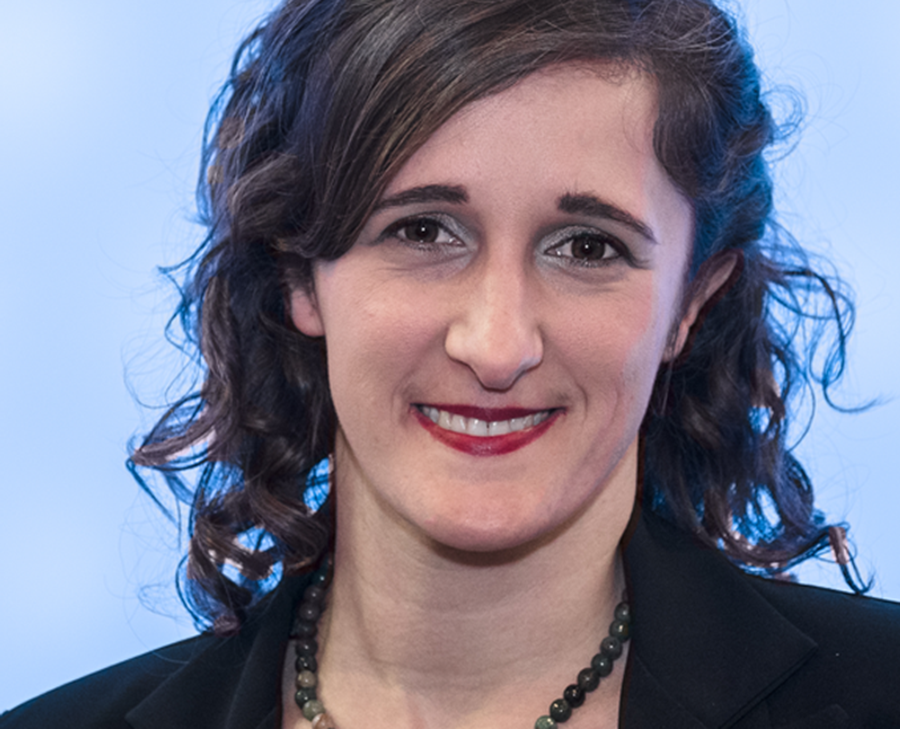Graphene Connects Researchers and Healthcare Professionals
We interview Cinzia Spinato and Nadia Pons about the upcoming Graphene Connect event in Barcelona, which will showcase graphene innovative projects targeting the healthcare sector.
As part of its strategy to reach out to new potential partners and establish new connections, the Graphene Flagship's Innovation Team organises different Graphene Connect events throughout the year. Graphene Connect fosters collaboration between research and industry towards the most promising commercial applications of graphene and related materials.
In this spirit, Cinzia Spinato (Graphene Flagship Business Developer at the Catalan Institute of Nanoscience and Nanotechnology ICN2) and Nadia Pons (Head of Innovation at the Medical Association of Barcelona) are organising a Graphene Connect event that will take place in Barcelona in November. This event will showcase graphene innovative projects targeting the healthcare sector, particularly graphene technologies for medical technologies and diagnostics. And for the first time, Graphene Connect will give entrepreneurs the opportunity to pitch their ideas in front of investors. Innovative projects using graphene technologies for medical devices, diagnostics, biotech, and other healthcare applications will have a fantastic opportunity to raise funding and build new synergies with key stakeholders in the Graphene Flagship.
Here, we interview Cinzia Spinato and Nadia Pons on their idea of organising this symbiotic event in Barcelona.
What are the main goals of the event?
Cinzia Spinato: Our main goal is to present the most promising graphene-based innovations for healthcare applications to the industrial and medical communities. We want to raise their interest and understanding of graphene and its huge potential.
Nadia Pons: Indeed, the aim is to generate awareness about cutting edge technologies, such as graphene and related materials, which could be used to create an impact in the health sector.
CS: We will bring together academics, medical doctors, companies and regulatory experts to discuss all the necessary aspects and challenges on the road to market for graphene technologies in healthcare, which is really different to the other more common applications of graphene.
NP: Moreover, thanks to the Health Entrepreneurship Programme within the Medical Association of Barcelona (CoMB), we want to guide and support entrepreneurs, and become the connection between medicine and technology.
How did the synergy between the Graphene Flagship and the Medical Association from Barcelona spark, and why do you think this can be beneficial for both parties?
CS: The synergy sparked after an event organised by Nadia Pons at the CoMB. We understood that by joining our respective network and expertise we could bring an added value both to the Graphene Flagship, as this is the first Investment Forum that takes place within the Graphene Flagship Consortium, and to the CoMB, bringing the medical community closer to cutting-edge technology that could be adopted in future medical or diagnostic devices.
NP: Indeed, this workshop is a good example of joining efforts to impact the innovation ecosystem.
What are the outcomes you expect from this event? Do you hope for new partnerships between graphene researchers and healthcare professionals to be formed?
NP: The event will be divided in two different sessions: the workshop, where researchers will present the latest advances on graphene applications for healthcare, and then the investment forum, with the participation of investors. We hope to increase the knowledge on graphene technologies among health professionals and become a showcase space where entrepreneurs could get new investments.
CS: We hope this event will be a good ground for discussion and networking between the different stakeholders – researchers, doctors, industries, investors – and will hopefully inspire new collaborations. We also want to provide to each of them a good understanding of the requirements and needs of the others, in order to align the efforts to bring graphene to the market, and eventually the patients.
What are the possibilities of graphene and graphene-enabled devices for medical care?
CS: One of the major advantages of graphene in medical devices is that it can allow for a significant miniaturization of the sensors, thanks to its high conductivity and sensitivity, and as well enable a variety of functionalities: optical sensing, conductivity, pressure sensing, and biosensing, among others. For example, at ICN2 we recently demonstrated that graphene-based neural interfaces can detect wavelengths in the brain that cannot be detected with the current metal-based technologies, opening a world of possibilities.
NP: Graphene can indeed disrupt medicine. Its unique characteristics, specifically biological compatibility, high conductivity and flexibility could represent a paradigm shift in the field of sensors and protheses. But from the investment point of view, we still need more solid technological validation, and this is why our Investment Forum can be really important towards new graphene products in healthcare.
Which graphene-enabled products would you say have higher TRL and will see the market sooner?
NP: I would say sensors can be the best candidates. Besides the technology maturity, there are several things to consider before reaching the market, such as IP, regulations, validations, investment, and many more. Any innovation willing to reach the market must focus on detecting a high impact medical need, then solve it using graphene.
CS: Indeed. Within the Graphene Flagship, the most developed technologies are sensors, such as vital sign sensors integrated in wearables, point-of-care biomarker sensors, and a few flexible neural probes for monitoring or stimulating brain activity. However, it will take a few years before we see them on the market.
What is the importance of start-ups in creating innovation on graphene technologies for health?
CS: Graphene technologies are still unknown to the big healthcare and biotech companies. However, these should be ready to absorb a deep tech start-up, as soon as the technology moves into clinical validation and its value and market potential increases. Therefore, it is important to invest from the very early stages in start-ups that bring forward disruptive technologies.
NP: For graphene, unless we are replacing an existing technology, research centres and entrepreneurs must create the market and start-ups are the linchpin of it. They provide flexibility and fast reactions to the environment you want to address.
You're also opening a call for projects to fund entrepreneurs, which is something unprecedented in Graphene Connect. What are your expectations, and what would you consider a successful experience?
NP: We want to generate a space where entrepreneurs, scientists, medical doctors and investors can meet and start new collaborations. We will measure success by looking at the number of projects pitched, the number of investors and, of course, the number of investments made possible through Graphene Connect and the first Health Investment Forum.
CS: This event will create a dedicated opportunity for entrepreneurs in healthcare and biotech to showcase their innovative projects in front of key investors and business angels. We expect to receive a good number of submissions to our call, but, for sure, the most successful outcome will be seeing the entrepreneurs getting some funding from the investors.
Banner image credit: Institut Català de Nanociència i Nanotecnologia, ICN2.
We want to guide and support entrepreneurs, and become the connection between medicine and technology."
Head of Innovation at the Medical Association of Barcelona

Nadia Pons, Head of Innovation at CoMB

Cinzia Spinato, Graphene Flagship Business Developer




